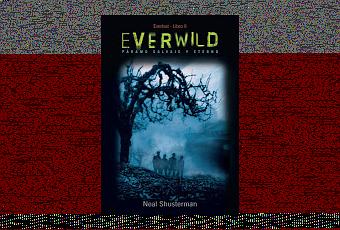

It's probably better to have read the first book before picking up Everwild - although the worldbuilding continues on, the exposition is kept to a minimum as there's just so much going on. The longer he lingers to save Afterlights from Mary and an eternity of peonage, the less likely it is that he will ever find the light himself. And Nick is gradually being taken over by that smear. Nick died while eating a candy bar and arrived in Everlost with a chocolate smear on his mouth. In Everlost, Afterlights tend to forget much of who they were when they were alive and they gradually take on the characteristics of what they do remember.

I love to hate Mary! On the other hand, Nick suffers for his altruism. Mary Hightower is a truly wonderful creation: beautiful, serene and outwardly kindly, but underneath it all she's the most delicious of sociopaths - utterly corrupted by power and with a core of true evil. Both venture to the margins of Everlost - Everwild - to raise armies of Afterlights, while Allie continues the search for her family and learns a great deal more about skinjacking.Īnd I loved it! The overlying narrative is pacy and tense, but the tension is punctuated by some wonderful slapstick humour, superb satire and umpteen clever pop-culture references.

Everwild takes up shortly after the previous climax and it's clear from the get-go that a bigger confrontation is unavoidable. The first book built up to and ended in the inevitable stand-off between Mary and Nick but it wasn't completely final, and several subplots remained unanswered. All Allie wants is to find her family and tell them that she's ok - after that, she thinks she'll be able to take her coin and move on. Allie (the Outcast) is a skinjacker - she can possess and inhabit the bodies of the living. He wants all Afterlights to find their way to their originally intended destination. Nick - the Chocolate Ogre - disagrees and he roams Everlost with a bucket containing coins that provide passage into the light. Mary thinks Everlost is a wonderful place and she "saves" the Afterlights she finds by giving them repetitive but addictive tasks to fill eternity. Mary Hightower, for instance, is so-called because she took up residence in New York in the Twin Towers. Adults never make it there, but significant or much-loved objects and buildings sometimes do. In this gripping trilogy, Neal Shusterman explores questions of life, death, and what just might lie in between.Neal Shusterman continues his part zany adventure, part philosophical enquiry, and part coming-of-age story that began with Everlost in this follow-up that is perhaps even better than its predecessor.Įverlost is a kind of limbo and home to children - Afterlights - who have died, but somehow missed the tunnel and the light - wherever and whatever the light actually is. At stake is nothing less than the fate of Everlost and the living world they have left behind. Nick and Allie have to learn to survive in a world with different rules, and figure out who they can trust-and who they must oppose at all costs. Allie and Nick don't survive the car crash, and end up in Everlost, where coins are more valuable than anyone knows, fortune cookies tell the truth, monsters are real, and the queen of lost souls lives in a once-beloved tower. It's a magical, yet dangerous place where bands of lost kids run wild and anyone who stands in the same place too long sinks to the center of the Earth. Some are caught halfway between life and death, in a sort of limbo known as Everlost: a shadow of the living world, filled with all the things and places that no longer exist. Not every child who dies goes on to the afterlife.


 0 kommentar(er)
0 kommentar(er)
